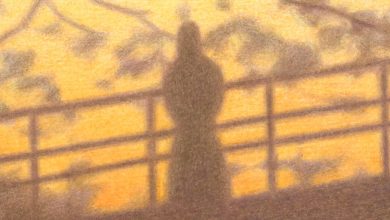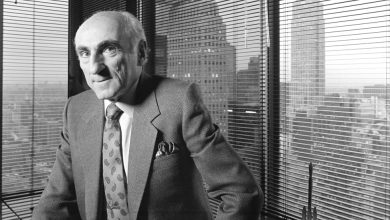A Columbia Professor Takes the University to Task Over Rankings

Good morning. It’s Wednesday. We’ll look at a Columbia University professor who is challenging Columbia’s place in U.S. News & World Report’s college rankings. We’ll also get details on the latest mask mandate to be dropped in New York.

Credit…David Payr for The New York Times
Admissions officers expect a certain amount of puffery on college applications — more extracurricular activities, more volunteer work and more drama club rehearsals or marching band outings than a student could possibly have time for. But what if a university puffed itself up — and vaulted almost to the top of U.S. News & World Report’s college rankings?
Michael Thaddeus, a Columbia University math professor, says that is what his own school did. He has challenged Columbia’s No. 2 ranking with a statistical analysis that said that key supporting data the school provided was “inaccurate, dubious or highly misleading.” I asked Anemona Hartocollis, who covers higher education, to explain Thaddeus’s accusations and put the controversy in context.
How much room for interpretation is there in the data? And can schools game the system — that is, can they manipulate the data that U.S. News considers?
I think the big reveal in what Dr. Thaddeus has done is that the numbers are subject to interpretation. Columbia, in its response to his work, did not deny this.
Columbia officials said that there is no one way of ranking universities. Every rankings system has its idiosyncrasies, and they suggested that Dr. Thaddeus was not as attuned to the quirks and nuances of the U.S. News system as Columbia’s data experts, who have spent years trying to understand it.
Also, they said, Dr. Thaddeus was at a disadvantage because public data sources were not always the most accurate ones.
What prompted him to start looking into the data behind the rankings?
One of the things that triggered his suspicion, he said, was that his experience with class sizes at Columbia was different from what Columbia reported.
Columbia said that 82.5 percent of undergraduate classes enrolled fewer than 20 students, a higher percentage than any other school in the top 100. He created a spreadsheet of classes with under 20 students, excluding some like lab and discussion sections and noncredit courses, and found that the percentage of core courses — Columbia’s famed general education courses — with fewer than 20 students was 45 percent. In engineering and natural sciences, below 50 percent of classes had fewer than 20 students. “This makes it impossible for the overall value to get anywhere near the figure of 82.5 percent claimed by Columbia,” he said.
Columbia was No. 18 in 1988. Dr. Thaddeus says that climbing to No. 2 was remarkable. Was it?
He speculated that Columbia could have benefited from the general improvement in the quality of life in New York City since 1988, when the university ranked No. 18. But he concluded that indicators like declining crime would have only an indirect effect on the academic quality of an institution, and in any case, are not the metrics used by U.S. News.
His conclusion? “Several of the key figures supporting Columbia’s high ranking are inaccurate, dubious or highly misleading.”
Columbia felt he had oversimplified its rise in the rankings. The march to No. 2 from No. 18 was not a slow and steady one over 34 years, they said. Columbia jumped 10 places in just one year, to No. 8 in 1989 from No. 18 the year before. This was because U.S. News changed its criteria, Columbia officials said.
More recently, before it attained the No. 2 spot in a tie with Harvard and M.I.T., it had been bouncing around the top five places for a decade, often tied with other schools.
How important are these rankings, anyway? What kind of a difference does it make if a school is, say, No. 10 as opposed to No. 2?
I don’t think it makes much difference to a school’s ability to attract research grants, for example, but it probably makes a difference in its ability to attract ambitious students and charge high tuition. We live in a society where status is paramount, and many students believe, perhaps rightly, that attending the most prestigious university they can get into will help them land the best job they can get.
And to give U.S. News its due, the rankings are hardly based on frivolous metrics. The percentage of professors who have the highest degree in their field — one of the criteria — is at least a rational attempt to measure quality in an objective way.
Weather
Expect a chance of rain later in the afternoon, with temps in the high 40s. In the evening, prepare for rain and temps in mid-40s.
alternate-side parking
In effect until April 14 (Holy Thursday).
‘We want to see our babies’ faces,’ the mayor says
It was another indication that Mayor Eric Adams is not letting up on his push to bring a sense of normalcy to a city devastated by the coronavirus pandemic. He announced an end Tuesday to the city’s school mask mandate for children under the age of 5, effective on April 4 if case counts remain low.
“We want to see our babies’ faces,” he said during a news conference at City Hall.
The move seems certain to cause some concern some because an Omicron subvariant, known as BA.2, is fueling increases in Europe. BA.2 now accounts for about 30 percent of cases in the city. But state health officials said on Monday that they did not expect BA.2 to lead to a “steep surge” in New York.
A mask mandate for older students in kindergarten through 12th grades was eliminated earlier this month. Dr. Ashwin Vasan, the city’s new health commissioner, said last week that the requirement for younger children was still necessary because they are not eligible for vaccination. “I’d love nothing more than to send my kid to day care without a mask,” Dr. Vasan, who has a 2-year-old, said then.
He said on Tuesday that he concurred with Adams’s decision to drop the requirement as long as case counts remained relatively low.
He also noted that wearing masks was optional.
“Let’s be respectful of whatever choice families make,” he said.
The latest New York news
-
The head of BuzzFeed News and two other top editors are departing the company ahead of cuts to the newsroom.
An arrest in a fatal attack on a Broadway voice coach
A coda to an attack on a respected Broadway voice coach: A 26-year-old woman turned herself in on Tuesday and was arraigned on manslaughter charges.
The police said the woman who surrendered, Lauren Pazienza, shoved the coach, Barbara Maier Gustern, 87, at about 8:30 p.m. on March 10 in the Chelsea neighborhood of Manhattan. Gustern, above right, fell, and her head hit the pavement. She was hospitalized with what relatives and friends said was a traumatic brain injury. She died five days later.
Court documents said Pazienza left the city the day after Gustern died, heading for her parents’ house in Long Island. Following a tip received from an anonymous source, police went there. Her father answered the door and said she was not there. The police also had shown surveillance video of the suspect in Penn Station to an employee at a building in Astoria, Queens, where Pazienza lived and the worker had identified her, the documents said.
A law enforcement official said she did not give a statement to investigators, and they have not determined a motive.
What we’re reading
-
Wondering how to monitor what flowers are in bloom in the city? Some local institutions have ways to track that, 6sqft reports.
-
City Limits reported on how two city housing agencies were slow in distributing Section 8 vouchers, which were issued last May.
METROPOLITAN diary
On the platform
To mark the two years of the pandemic, this week’s Metropolitan Diary entries features reader tales of life in New York City during the pandemic.
Dear Diary:
It was September, and I was in New York for the first time since the pandemic began.
I waited on the subway platform, masked and nervous. The local arrived, and I got on. One stop, two, still nervous.
When the train got to the third stop, a well-dressed man who had been sitting to my right got off and headed across the platform for the express.
I noticed that he had left behind a bag that looked like it might have his lunch inside.
I grabbed it.
“Hey!” I shouted.
The man who had left the bag didn’t turn around, but a large man in coveralls who was standing on the platform did. He saw the bag and motioned for me to give it to him.
I handed it over as the doors began to close on me. The man in coveralls ran toward the express.
“Blue suit!” he yelled.
My train pulled away, and I watched him hand the man his lunch bag as the express doors closed.
— Michael Sardo
Illustrated by Agnes Lee. Send submissions here and read more Metropolitan Diary here.
Glad we could get together here. See you tomorrow. — J.B.
P.S. Here’s today’s Mini Crossword and Spelling Bee. You can find all our puzzles here.
Melissa Guerrero, Jeff Boda and Ed Shanahan contributed to New York Today. You can reach the team at [email protected].
.





